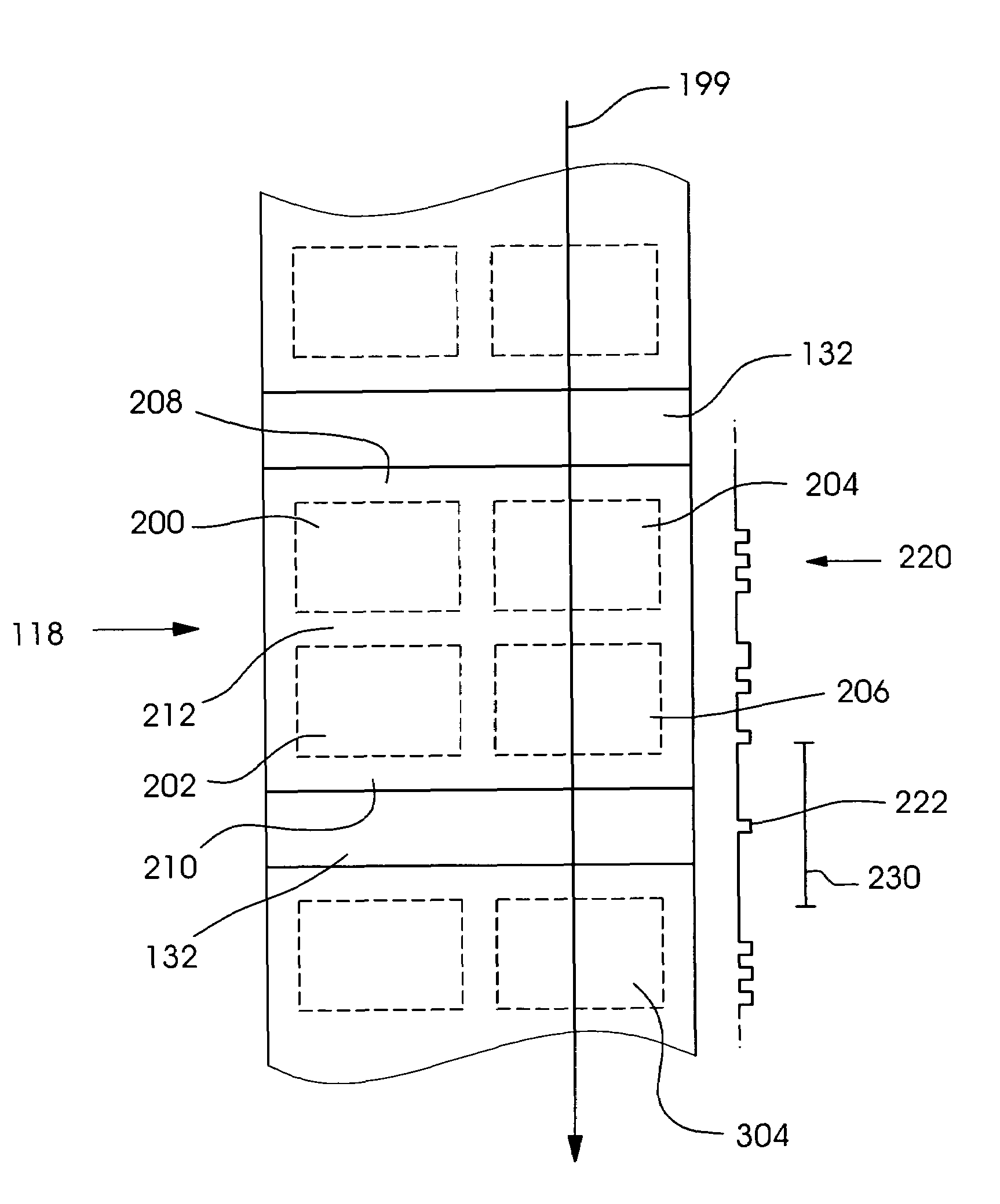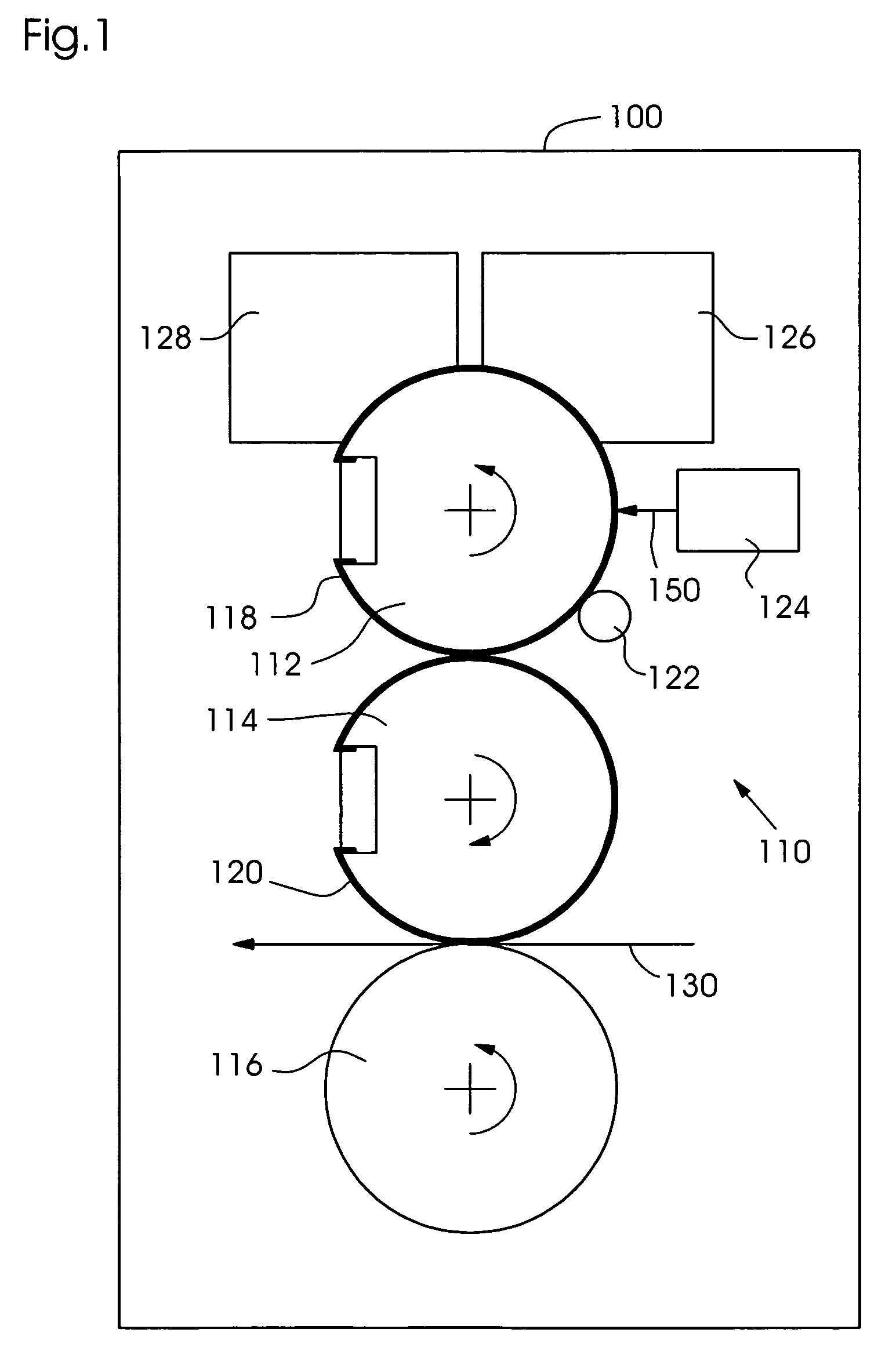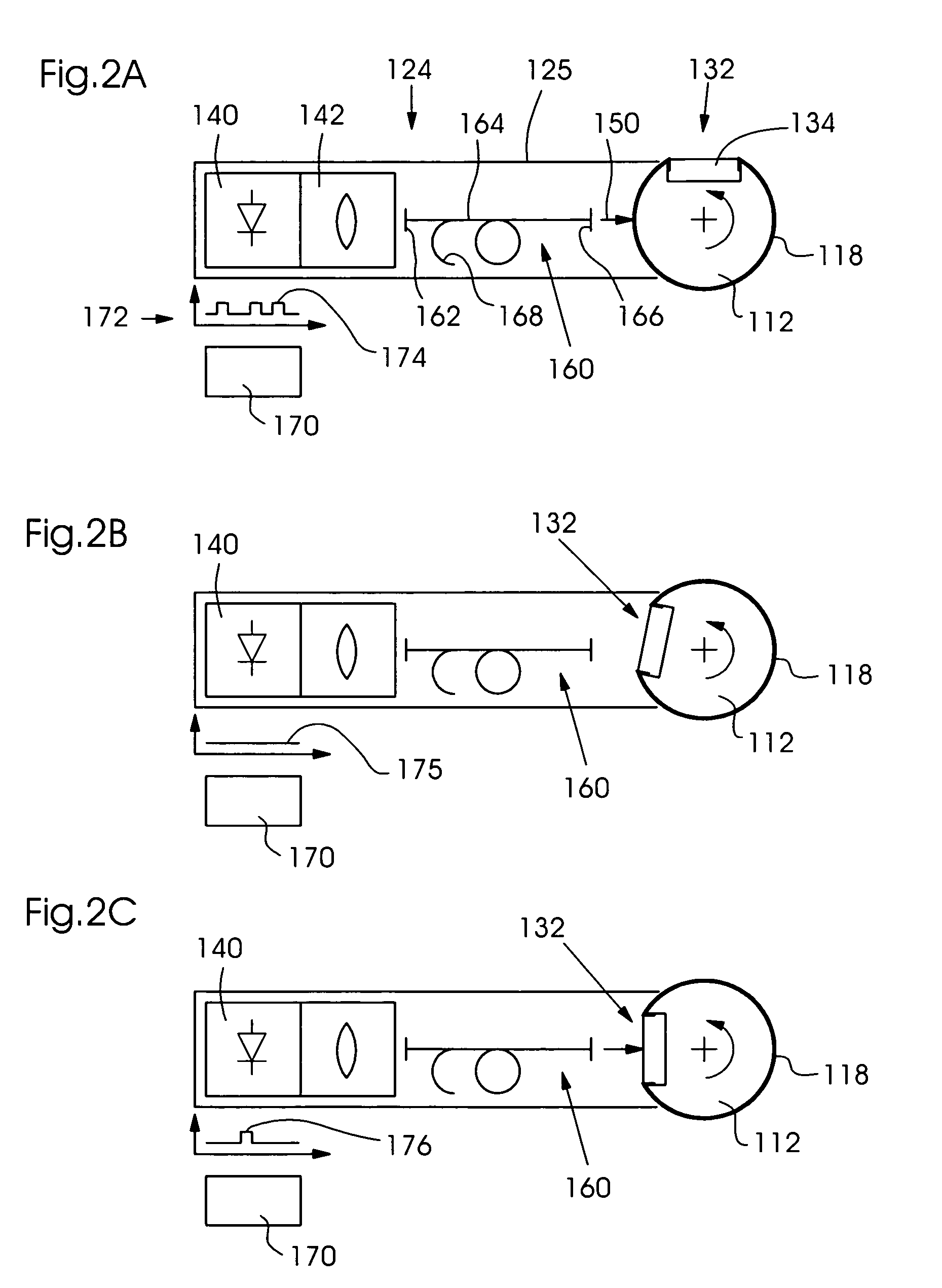Method and device for imaging of a printing form
a printing form and imaging technology, applied in the field of imaging a printing form, can solve the problems of occupying a rather large space, occupying a longer average life, and limited to a power range below 1 wa
- Summary
- Abstract
- Description
- Claims
- Application Information
AI Technical Summary
Benefits of technology
Problems solved by technology
Method used
Image
Examples
Embodiment Construction
[0039]FIG. 1 shows a printing-material processing machine 100, here, in particular, a sheet-fed offset printing press. A printing unit 110 of the printing press is associated with a plate cylinder 112, a transfer cylinder 114, and an impression cylinder 116; a printing form in the form of an offset printing plate 118 being mounted on the surface of plate cylinder 112, and a rubber blanket 120 being mounted on the surface of transfer cylinder 114. Offset printing plate 118 is designed as an imagable or, possibly, reimagable printing plate.
[0040]A cleaning device 122, an inventive imaging device 124, a dampening system 126, and an inking system 128 are arranged along the circumference of plate cylinder 112. In an imaging mode, imaging device 124 generates a laser beam 150, which patterns the surface of printing plate 118 according to the image information. Imaging device 124 can be moved, for example, in an axial direction relative to the axis of the plate cylinder in order to complet...
PUM
| Property | Measurement | Unit |
|---|---|---|
| power | aaaaa | aaaaa |
| diameter | aaaaa | aaaaa |
| surface speed | aaaaa | aaaaa |
Abstract
Description
Claims
Application Information
 Login to View More
Login to View More - R&D
- Intellectual Property
- Life Sciences
- Materials
- Tech Scout
- Unparalleled Data Quality
- Higher Quality Content
- 60% Fewer Hallucinations
Browse by: Latest US Patents, China's latest patents, Technical Efficacy Thesaurus, Application Domain, Technology Topic, Popular Technical Reports.
© 2025 PatSnap. All rights reserved.Legal|Privacy policy|Modern Slavery Act Transparency Statement|Sitemap|About US| Contact US: help@patsnap.com



